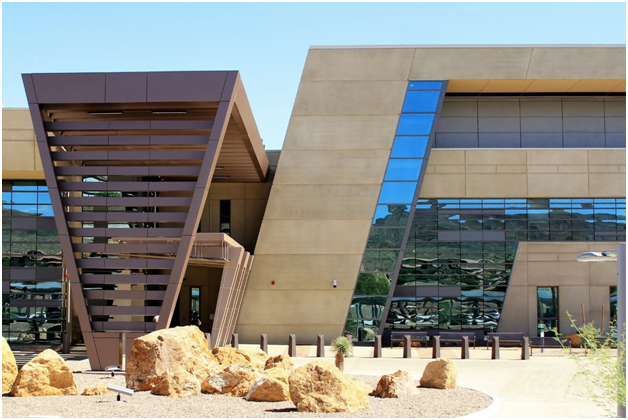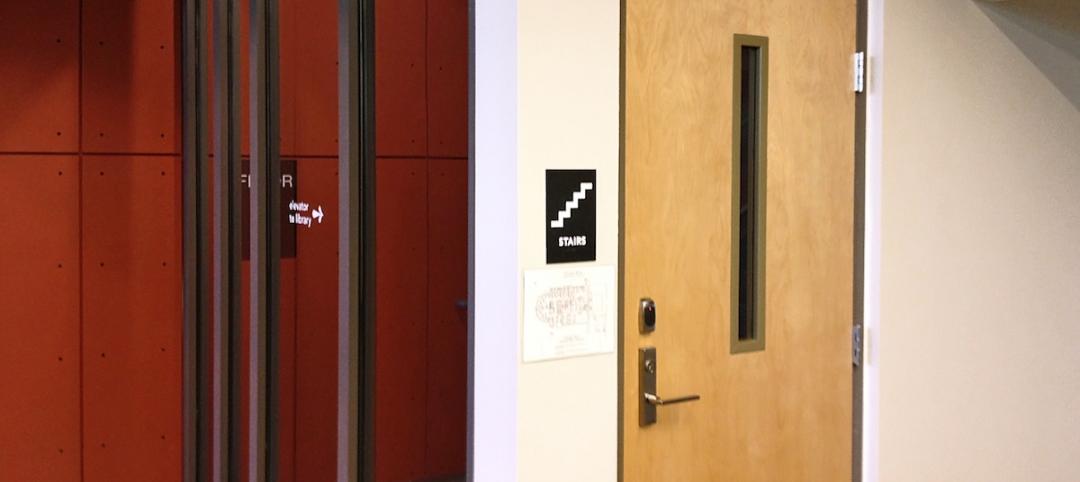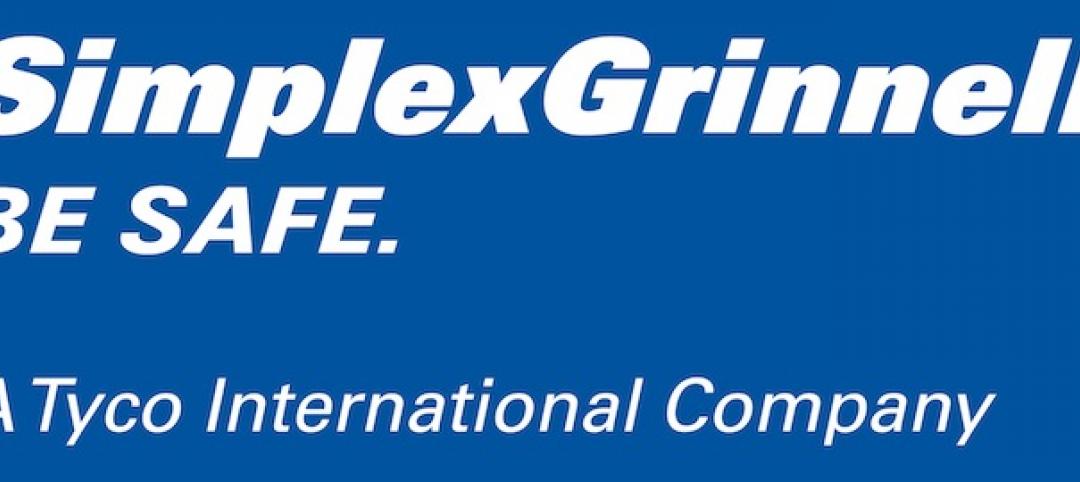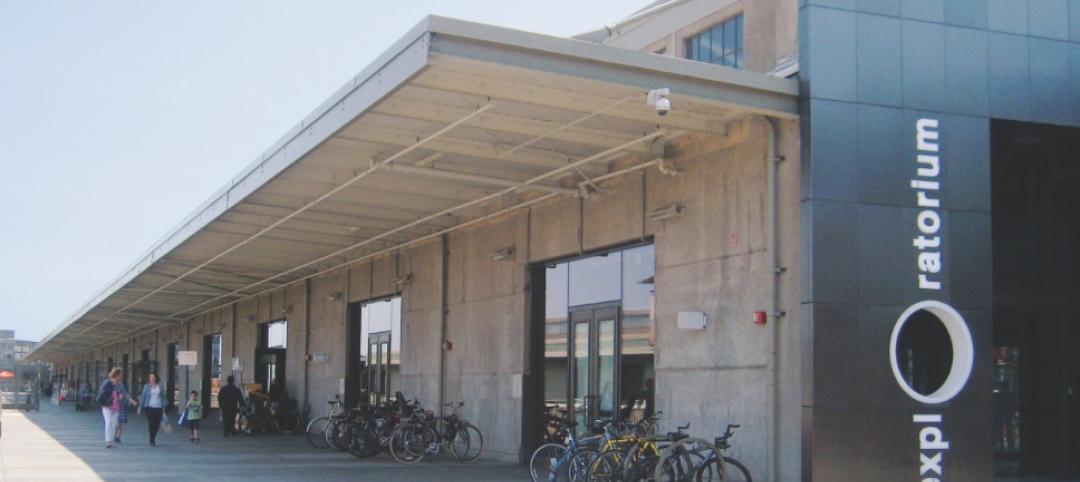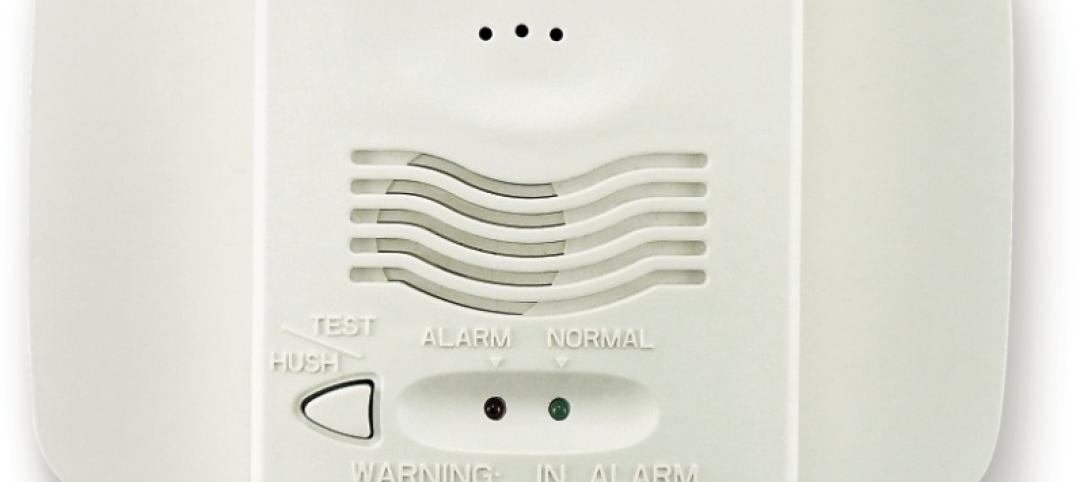The Department of Defense (DoD) published the Unified Facilities Criteria (UFC) 4-010-01 Antiterrorism Standards for Buildings as a mandatory guideline to mitigate the threats of terrorism against buildings and ensure the safety of the individuals that inhabit them. It applies to all newly constructed DoD Components, DoD inhabited buildings, billeting and high-occupancy housing, as well as already inhabited buildings where the renovation costs are 50% or more than the value of the building (for a complete list, please see UFC 4-010-01 section 1.8).
One of the areas that the UFC standard addresses in great detail is blast hazard mitigation, particularly in window systems, due to the fact that the majority of the damage and injuries are caused by high velocity glass fragments on people in the building or in the vicinity when a blast occurs. SAFTI FIRST became very familiar with the DoD’s blast requirements when they were selected by the architects to supply a fire resistive, blast rated curtain wall for an Army Hospital in the West Coast.
The fire resistive, blast rated curtain wall in this medical facility is located near a drive-up/drop off area, which typically is exempt from building hardening requirements (see Section B-1.3). However, since this Army Hospital is classified as a critical facility – defined in Section 1-7.3 as “buildings that must remain operational during periods of national crisis and may be subjected to a terrorist attack may warrant design to higher levels of protection that those provided in these standards” – the following blast ratings were required by the army:
- Provide laminated glass with a minimum interlayer thickness of 0.030 in. (0.75 mm) with a load resistance determined by ASTM E1300 greater or equal to the 3-second duration equivalent design load determined from ASTM F2248.
- In accordance with ASTM F2248, ensure that the framing members restrict deflections to 1/160 of the length of the supported edge at allowable stress levels under the equivalent 3-second design loading of 50 lbs. psf.
- The connection design will be determined in accordance with ASTM F2248 based on two times the equivalent 3-second design loading of 50 lbs. psf.
Sections of the blast rated curtain wall also had to meet a 2-hour, ASTM E-119 fire resistive rating per Section 1023.7 of the IBC, which says:
“… Where nonrated walls or unprotected openings enclose the exterior of stairways or ramps and the walls or openings are exposed by other parts of the building at an angle of less than 180 degrees (3.14 rad), the building exterior walls within 10 feet (3048 mm) horizontally of a nonrated wall or unprotected opening shall have a fire resistance rating of not less than 1 hour.”
In addition to the blast and fire resistive performance, the curtain wall system also had to meet windload requirements, static and dynamic water testing, air infiltration testing as well as thermal movement requirements. The design of the fire resistive, blast rated curtain wall system was also a challenge. The design called for a glass and framing system that spanned 45 feet and canted out a few degrees.
With all these performance and design requirements, it was clear that the architects and the US Army were looking for fire rated systems manufacturer with unique fabrication capabilities that could deliver a high-performance, custom-engineered curtain wall system. After reviewing several proposals, the design team chose SAFTI FIRST to deliver the solution they desired.
SAFTI FIRST supplied the GPX Blast System, a complete fire resistive, blast rated, aluminum curtain wall manufactured and fabricated in Merced, CA. The GPX Blast system uses custom ASTM E-119 rated, fire resistive SuperLite II-XL glazing with one tempered and laminated lite with a minimum interlayer of 0.030 in. designed in accordance with ASTM F2248: Standard Practice for Specifying an Equivalent 3-Second Duration Design Loading for Blast Resistant Glazing Fabricated with Laminated Glass. It also meets a 3-second design loading of 50 lbs. psf per UFC 4-010-01 and ASTM E1300: Standard Practice for Determining Load Resistance of Glass in Buildings.
The GPX Blast System can be engineered to meet all levels of blast protection depending on the project, with static and dynamic analysis using Wingard software, which is standard industry practice and allowable under DoD standards. It is also offered in standard and custom finishes including high performance fluoropolymer finishes by PPG, clear anodized, bronze anodized, black anodized, Decoral, any species of wood veneer, ornamental metal, and more.
SAFTI FIRST also supplied SuperLite II-XL 60 and 120 in GPX Architectural Series framing for the stairwells and atriums, which incorporated warm gray spandrel glass for a decorative effect.
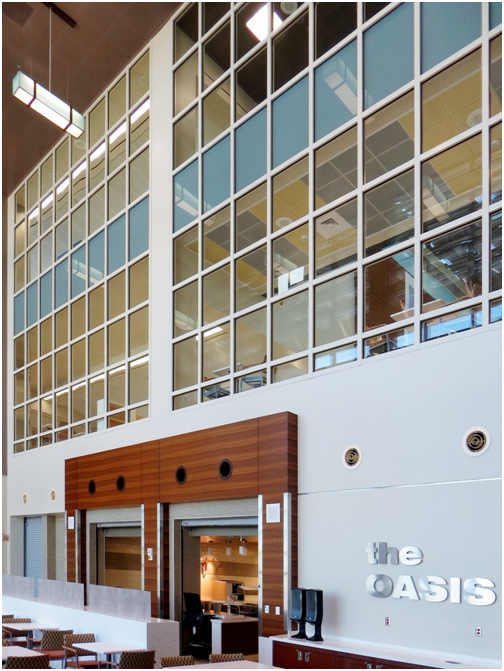 1 hour fire resistive atrium walls with SuperLite II-XL 60 in GPX Architectural Series framing. Some units incorporated warm gray spandrel glass for a decorative effect.
1 hour fire resistive atrium walls with SuperLite II-XL 60 in GPX Architectural Series framing. Some units incorporated warm gray spandrel glass for a decorative effect.
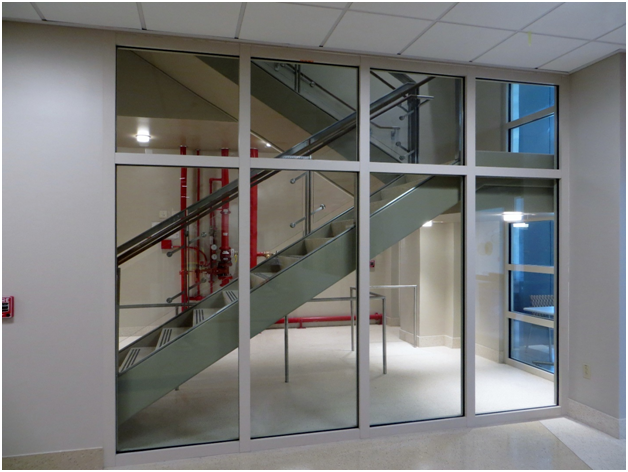 2 hour fire resistive stairwells with SuperLite II-XL 120 in GPX Architectural Series framing.
2 hour fire resistive stairwells with SuperLite II-XL 120 in GPX Architectural Series framing.
Because this was a high-security project, SAFTI FIRST’s project management team worked with the construction team to ensure that all the schedules were met and that appropriate security clearances were obtained to ensure smooth and timely delivery of all product being supplied.
The result is an elegant, high-performance solution that met both the aesthetic, security and performance requirements of a modern Army Hospital that promotes healing for the brave men and women who serve our country.
Related Stories
Sponsored | | Jan 30, 2014
Transparent, fire rated stairwell enhances design of renovated Cincinnati Art Museum
When the Cincinnati Art Museum embarked on an $11 million renovation, the architects wanted the entrance and main stair to be as inviting as possible. Transparent, fire rated glazing from SAFTI FIRST was a key component of the design solution.
| Jan 10, 2014
What the states should do to prevent more school shootings
To tell the truth, I didn’t want to write about the terrible events of December 14, 2012, when 20 children and six adults were gunned down at Sandy Hook Elementary School in Newtown, Conn. I figured other media would provide ample coverage, and anything we did would look cheap or inappropriate. But two things turned me around.
| Jan 10, 2014
Special Report: K-12 school security in the wake of Sandy Hook
BD+C's exclusive five-part report on K-12 school security offers proven design advice, technology recommendations, and thoughtful commentary on how Building Teams can help school districts prevent, or at least mitigate, a Sandy Hook on their turf.
| Jan 9, 2014
16 recommendations on security technology to take to your K-12 clients
From facial recognition cameras to IP-based door hardware, here are key technology-related considerations you should discuss with your school district clients.
| Dec 13, 2013
Safe and sound: 10 solutions for fire and life safety
From a dual fire-CO detector to an aspiration-sensing fire alarm, BD+C editors present a roundup of new fire and life safety products and technologies.
| Dec 5, 2013
Exclusive BD+C survey shows reaction to Sandy Hook tragedy
More than 60% of AEC professionals surveyed by BD+C said their firms experienced heightened interest in security measures from school districts they worked with.
| Nov 14, 2013
Tyco acquires Westfire Inc.
US Operations of Global Acquisition Strengthen Tyco SimplexGrinnell’s Special Hazards Fire Protection Capabilities for Mining, Telecommunications and Energy Markets
| Oct 27, 2013
SimplexGrinnell Awarded Contract by National Joint Powers Alliance for Streamlined Procurement of Fire and Life-Safety Solutions
Agreement Provides 50,000 Public Entities with Simplified Access to Comprehensive Suite of Products and Services
| Aug 23, 2013
The Exploratorium’s tall order
The newly-opened Exploratorium has brought energy and excitement to the city’s bustling waterfront. EHDD transformed the historic Pier 15, built in 1915, to a 330,000 square foot indoor and outdoor campus, being touted as the largest net-zero building in the city and potentially the largest net-zero museum in the world.
| Aug 22, 2013
New CO-PLATE makes revenue generation through CO detector replacement easier
With the first round of system-connected carbon monoxide (CO) detectors reaching their end of life, there’s a big opportunity for dealers and installers to increase their revenue streams through CO detector replacements. System Sensor has launched a new CO-PLATE Carbon Monoxide Detector Plate to coincide with this opportunity.


